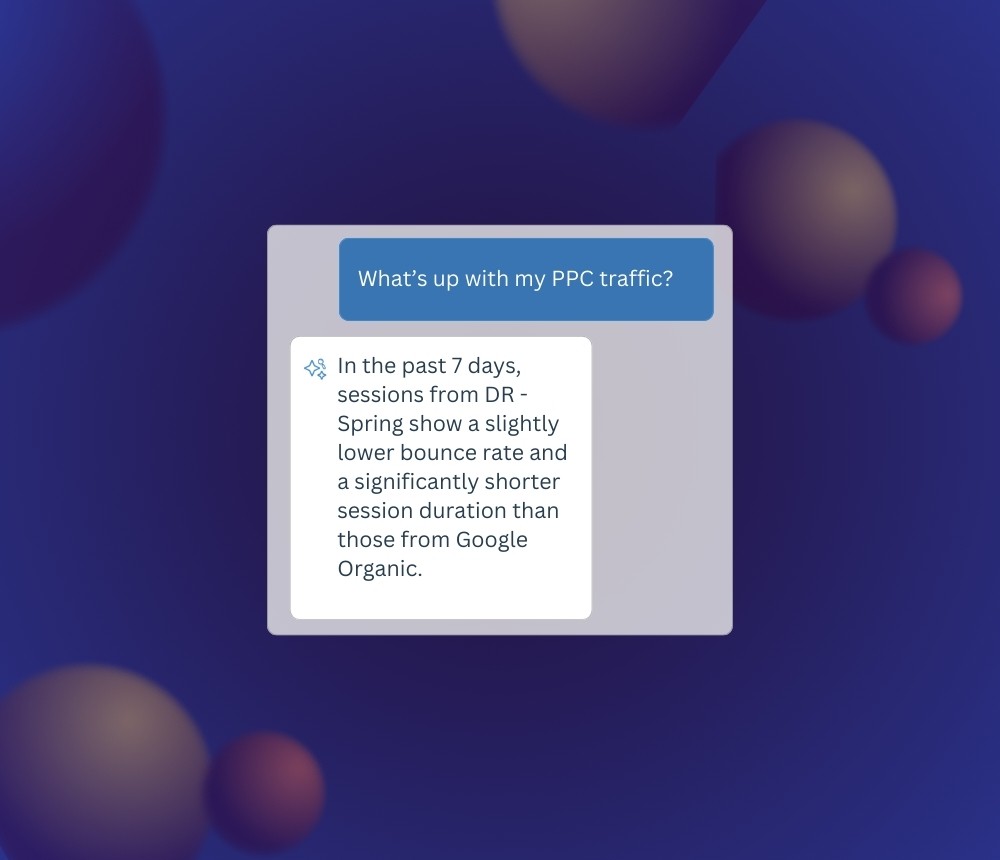Planning A Successful Affiliate Marketing Program

On paper, starting a business sounds easy. Great product? Check. Awesome website? Check. The hard part is figuring out how to attract more customers to your business.
With 90 percent of e-commerce startups failing in their first year, the odds are stacked against you. The solution? A kick-ass marketing campaign. But what kind?
A good place to start is an affiliate program. Since 2010, affiliate marketing spending has grown year on year. By 2022, it's projected to be worth $8.2 billion in the US.

But what is an affiliate program and how does it work? You may have come across messages like this before:
“Disclaimer: This article contains affiliate links. We may receive a small commission when you make a purchase at no extra cost to you.”
That’s affiliate marketing in a nutshell. An online retailer pays affiliates a commission, and in exchange, affiliates bring customers to the retailer.
Affiliates may be existing customers or publishers who promote the retailer on their website. This type of performance-based marketing is popular since retailers only have to pay for genuine results.
Having a great affiliate marketing plan has many benefits:

Sounds good, right? To reap these benefits, though, you need a solid affiliate marketing campaign. That’s where this article comes in.
There are seven steps to planning a successful campaign. These are:
Market research
Defining your goals and KPIs
Finding affiliates
Equipping affiliates
Creating a commission strategy
Managing your affiliate program
Optimizing your website
Step 1: Market research
The first step in any affiliate marketing campaign is market research. Unless you know the market, you won’t know which affiliates to work with. That’s why you need to:
Research your target audience
Research your competitors
Research your target audience
As with all marketing campaigns, you first need to know your customers. Ask questions like:
Where do they like to shop?
What do they like to buy?
Which channels do they subscribe to?
Who do they follow on social media?
When are they most active online?
The best way to find out is to check out the kind of content that’s popular with your target audience. Look at popular blogs, lurk on social media and subscribe to popular podcasts and YouTube channels. You can also use online analytics to track website traffic and find popular search terms.
Use your research to build a profile of your target audience, then use this profile to choose affiliates who are popular with the customers you want to attract. More on how to find the right affiliates for your business later in this post.
Research your competitors
It also pays to look at what your competitors are doing. Look up their affiliate programs and keep a record of things like:
How they pay affiliates (e.g. per sale, per lead, per click).
What they pay affiliates (their commission rate).
What discounts, bonuses and incentives affiliates get.
Depending on the industry, commissions can range from five percent to 30 percent or more. The industries with the highest cost-per-lead are finance and marketing.

Whatever industry you’re in, you need to be competitive. If you have a small budget, this means paying a smaller number of affiliates well. You can always add more affiliates when your budget increases.
Step 2: Defining your goals and KPIs
The next step in your affiliate marketing campaign is defining your goals and key performance indicators.
These shape your marketing strategy and will further clarify the affiliates you want to work with.
Defining your goals
For a successful affiliate marketing program, you should make your goals SMART.
For instance, your goal might be to:
Increase website traffic by 10 percent each month.
Convert 30 new customers each week.
Decrease churn by 20 percent by the end of the year.
To attract new customers, you could offer discounts through a price comparison website. This is the most common affiliate activity among consumers.

To reduce churn, you could partner with a cashback or loyalty website. But unless you have clear goals, you won’t know which affiliates could help you achieve them.
Defining your KPIs
You also need a way to measure how successful your affiliate marketing campaign is. KPIs are a tried-and-tested way to do this. From evaluating your customer service team to tracking financial growth, they can chart performance for all aspects of your business.
For an affiliate program, your KPIs could include:
The number of sales, leads or clicks each month.
The number of affiliates in your program.
The number of customers each affiliate brings in.
Your business's conversion rate.
The number of orders each month.
To track your KPIs, you can use online retail analytics. They can show you things like:
Which affiliate partnerships are the most beneficial.
Any customer pain points that need addressing.
When products need restocking.
How much your average customer spends.
Step 3: Finding affiliates
Now you've got a clear idea of what you want to achieve. But without affiliates, your careful planning will go to waste. So let's talk about how to find affiliates.
The first thing to think about is the different types. You'll want a mixture, including:
Conversion affiliates: Help businesses increase conversion rates and reduce churn.
Content affiliates: Insert links on keywords in online content.
Comparison affiliates: Rate different businesses so customers can compare them and choose the best one for them.
Incentive affiliates: Give users a cashback reward for purchasing through affiliate links.
Website affiliates: Do product reviews and announcements on their website or blog.
Email affiliates: Include business info in emails to customers on their email list.
There are lots of ways you can go about finding affiliates, such as:
Offering existing customers a small commission to recommend your product.
Attending affiliate marketer conferences and other events.
Reaching out to influencers on social media.
Reaching out to popular blogs and websites with emails, phone calls, or calls with video.
Joining affiliate networks, which connect businesses and publishers.
Partnering with a marketing platform.
Once you’ve found affiliates, you need to assess their potential. This is particularly important if you’re on a tight budget. Consider factors like:
How much website traffic do they get?
Is the look and feel of their website consistent with your brand?
How many active promotions do they have?
How highly do they rank on search engines?
How many followers do they have on social media?
Will they be a good long-term partner?
Step 4: Equipping your affiliates
Once you’ve chosen which affiliates to work with, you need to equip them with the resources to promote you. Set up a dedicated affiliate marketers page where they can access resources such as:
Branding (e.g. tone and style)
Banner ads
Emails and social media posts
CTAs and other buttons
Links to include
Product descriptions
Pricing and offers
Videos and other dynamic content
Step 5: Creating a commission strategy
As we've discussed, commission payouts vary. Don't try to match high-ticket affiliate programs unless you can afford to. Choose a commission that's attractive to affiliates but won't break the bank.
There’s a range of factors to consider when creating a commission strategy, including:
Average order value (AOV). How much do customers spend on average per order.
Customer acquisition cost (CAC). How much it costs to bring in a new customer.
Conversion rate. How many website visitors convert into customers.
Cost of goods sold (COGS). How much it costs to produce each item sold.
Customer retention rate (CRR). How many customers you keep each month.
Customer lifetime value (CLV). The value of a customer during their entire time as your customer.
If your profit margins are low, you won’t be able to pay affiliates as much as if they were higher, but you should still aim for a minimum of 10 percent.
The next thing you need to decide is how to pay affiliates. Affiliates prefer payment for clicks or impressions as it gives them more income, but for retailers, paying per sale or lead is better as it ensures you’re only paying for results. Only pay per click or impression if you want to quickly generate a large amount of traffic.
Finally, you should offer your affiliates regular incentives like contests or higher payments. This will encourage them to keep working with you.
Step 6: Managing your affiliate program
It takes a lot of effort to run a successful affiliate advertising campaign. You need to:
Find and approve affiliates.
Negotiate contracts.
Keep affiliates engaged and informed.
Track payments.
Develop promotional material.
Track conversions, churn, and sales.
Manage your affiliate marketing page.
An affiliate manager can do all this for you. They can be either in-house or sourced from an external agency. There are pros and cons to each approach, so choose the option that will best suit your business.
Step 7: Optimizing your website
The final stage in your affiliate marketing campaign is to take your website through conversion rate optimization. This involves tweaking your website to ensure your conversion rate is as high as possible.
There are two types of CRO:
Reactive: Fixing any issues flagged by visitors or customers.
Proactive: Using online tools to find areas you can optimize before there’s a problem.
You should use both types of CRO to make sure you convert and keep as many customers as possible.
Seven steps to success
In this article, you've learned how to create an affiliate program in seven steps. It may seem like a lot at first, but it’s pretty simple once you get the hang of it. And once you do, you’ll be well on your way to creating a successful affiliate marketing campaign.



